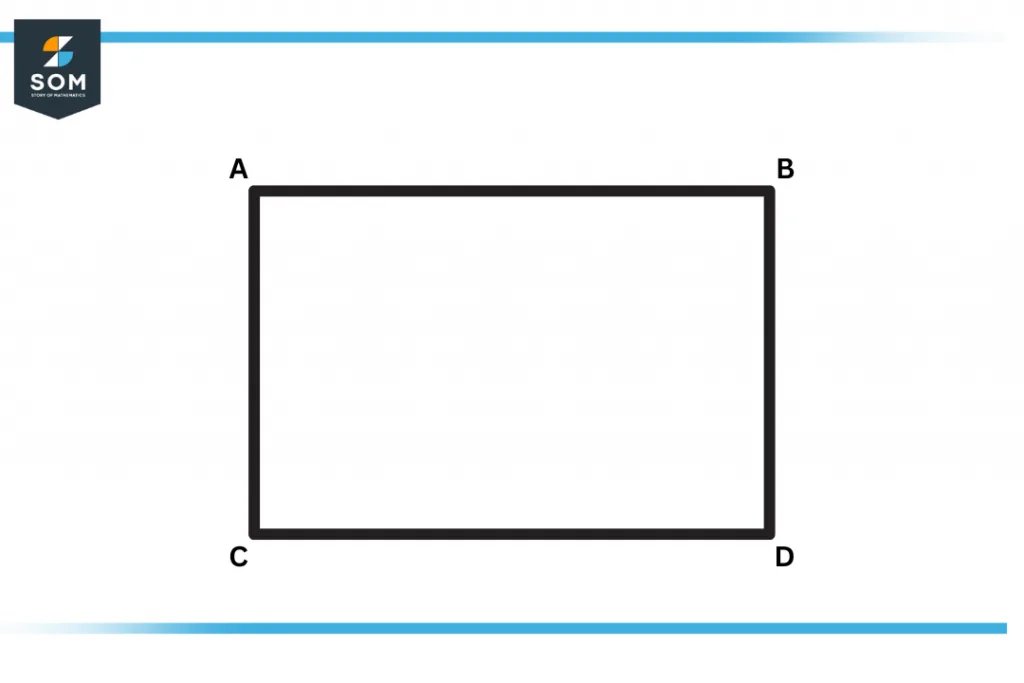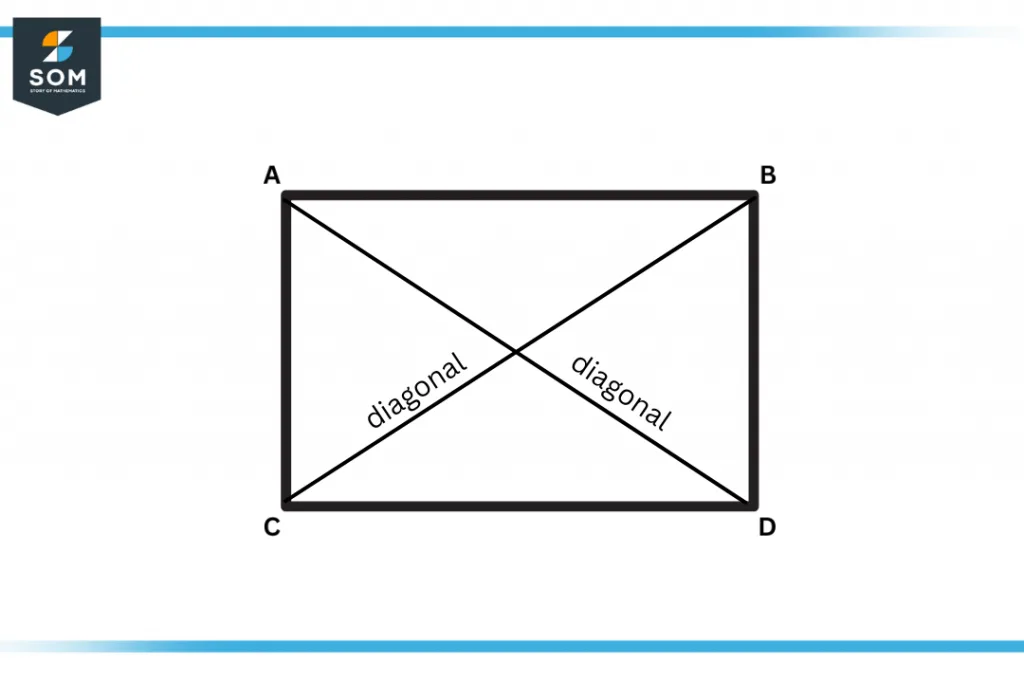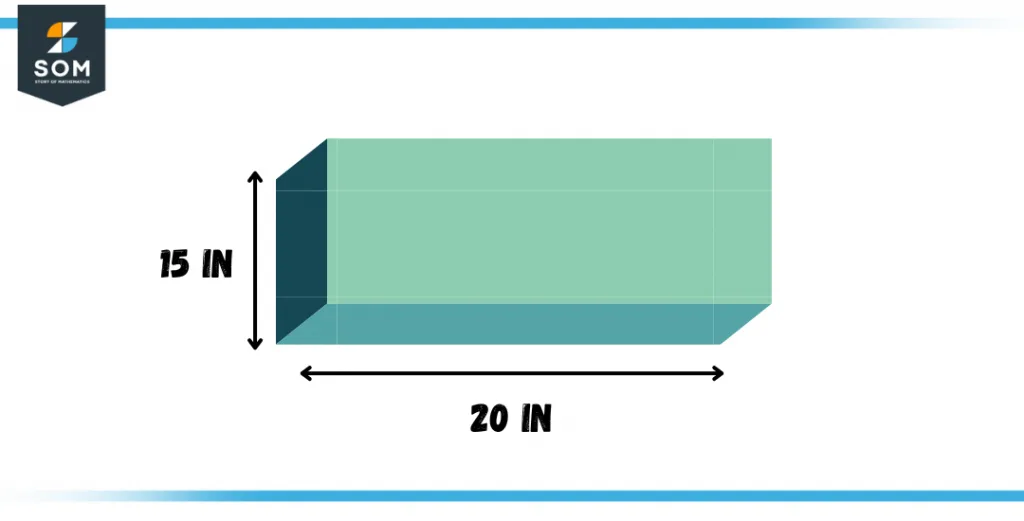JUMP TO TOPIC [show]
Rectangle|Definition & Meaning
Definition
A rectangle is a flat (two dimensional) shape with four straight sides such that the length of the opposite sides are equal in measure and it possesses right angles for all of its interior angles. Therefore, both pairs of opposite sides are parallel and each side is perpendicular to all adjacent sides.
Audio PlayerWhat Is a Rectangle?
A polygon having four sides or 4 corners are called a rectangle. If the edge-to-edge distance of all the sides of a polygon is equal in length, then the formed shape is known as a square. Whereas a rectangle has two pairs of equal-length sides, and the equal sides are opposite to each other, which differentiates it from a square.

Figure 1 – ABCD is the rectangle where AB is the length and AC is the width.
A rectangle is a two-dimensional shape, which means it can not be transformed into a 3D surface. In 3 dimensional geometry, a rectangle is sometimes referred to as a cube. All the inner angles of a rectangle are equal in measure of 90
Diagonals of a Rectangle
The line segment that begins from one vertex and ends at the opposite non-adjacent vertex is known as a diagonal. A rectangle has two diagonals that bisect each other at their point of intersection. Both diagonals are congruent and equal in length. They are not mutually perpendicular. A diagonal divides the rectangle into two right-angled triangles.

Figure 2 – Diagonals of a Rectangle
Finding the Length of a Diagonal
Consider the right angle triangle ABC, diagonal BC is the hypotenuse, AB (length) is the base, and AC (width) is the perpendicular of the triangle.
Let d represent the diagonal, l represents the length, and w represent the width. Then, by using Pythagoras’ theorem, we have
Diagonal2 = length2 + width2
d2 = l2 + w2
d =
Let’s take a look at how to find the length of diagonals of a rectangle having two sides of 10cm in length and the other two of 6cm in length. By using the formula,
d =
=
=
=
d = 11.6 cm
Therefore, the length of both diagonals is 11.6cm.
Properties of Rectangle
Following are the properties of a rectangle
- A rectangle is a quadrilateral.
- It has 4 sides, 4 angles, and 4 vertices.
- Opposite sides of a rectangle are equal.
- Diagonals of a rectangle bisect each other.
- The length of the diagonals is equal.
- Each angle of the rectangle is 90 degrees.
- If you sum up all the interior angles, the result would be 360 degrees.
- The longer side of the rectangle is its length.
- The shorter side of the rectangle is its width.
3D Rectangle
A 3-dimensional rectangle is called a rectangular prism and cuboid. It has 6 faces, 12 edges, and 8 vertices.
Area of Rectangle
The area of the rectangle is the entire region surrounded by the rectangle’s boundaries in a 2-dimensional plane. It is the product of length and width. The area occupied by rectangular-shaped objects such as a television, blackboard, door, refrigerator, etc., can easily be calculated by utilizing the formula for the area of a rectangle:
Area of rectangle = length * width
Consider an example of a television whose length is 42 inches and width is 20 inches. To figure out the exact area of a rectangle, we use the following formula,
Area = length * width
= 42 * 20
= 840 inch2
The Perimeter of a Rectangle
The perimeter of a rectangle is the path or distance covered by the boundary of the rectangle in a 2-dimensional plane. If two adjacent sides of a rectangle are summed up, we get the perimeter of a rectangle, which can be found using the mathematical formula given below,
Perimeter of rectangle = length + length + width + width
= 2*(length) + 2*(width)
= 2(length + width)
Consider an example of a gardener who wants to find out how much wire would be required to put a fence around his garden. The length of the garden is 15 feet, and its width is 6 feet.
The answer to this problem can be found by calculating the perimeter of the garden as follows:
Length = 15 feet
Width = 6 feet
Perimeter = 2(length + width)
= 2(15 + 6)
= 2(21)
= 42 feet
Hence, 42 feet of wire would be required to put a fence around the garden.
Quadrilateral
A quadrilateral is a four-sided plane closed figure. It has four angles and four vertices. It is a (four-sided) polygon also known as a tetragon. The total measurement of all the interior angles comes out to be 360 degrees.
A quadrilateral is a combination of two Latin words, where Quadri stands for four, and lateral is described as sides. Hence, the name itself gives the description of this plane figure.
A rectangle is a type of quadrilateral. Some other types of quadrilaterals are square, parallelogram, rhombus, trapezium, and kite.
Square
A Square is a quadrilateral, but it differs from a rectangle as all of its sides are equal in length. Like a rectangle, a square has four equal angles of 90 degrees each. Diagonals of a square cross each other at a common point that has a 90-degree angle, thus bisecting each other perpendicularly.
Parallelogram
A parallelogram is a quadrilateral. It is like a rectangle, but its diagonals are unequal. Its opposite sides are parallel and equal. Diagonals bisect each other at the midpoint and shape two congruent triangles. A parallelogram has opposite equal angles.
We can say that a rectangle possesses all the mathematical properties of a parallelogram, but a parallelogram does not have all the properties of a rectangle. So a rectangle is a parallelogram, but a parallelogram may not be a rectangle.
Rhombus
A rhombus is a quadrilateral having all four sides equal, opposite sides parallel, and opposite angles equal. Diagonals of a rhombus cross each other at a common point that has a 90-degree angle, thus bisecting each other perpendicularly. All squares are rhombus, but the converse may not be true.
Trapezium
A trapezium is a combination of parallel and non-parallel sides. A quadrilateral having only one pair of non-adjacent parallel sides and having the other two as non-parallel sides is a trapezium. The sides that are parallel to each other are known as bases, whereas the other two non-parallel sides are known as legs. A parallelogram is a trapezium but a trapezium is not a parallelogram.
Kite
A kite is a four-sided figure, just like a tilted parallelogram but with two pairs of sides having equal lengths. If we draw the diagonals of a kite, they will behave just like a normal rectangular diagonal by intersecting each other at right angles.
The interior opposite angles of a kite are obtuse and equal in measure.
Solved Examples Involving Rectangular Shapes
Example 1
Find the length of a rectangle whose area is 400 feet2 and whose width is 16 feet.
Solution
Given:
Area = 400 feet2
Width = 16 feet
Length = ?
As we know that:
area = length * width
Putting the values of area and length in the above formula, we get:
400 = length * 16
400/16 = length
25 feet = length
Length = 25 feet
Therefore, the rectangle has an area of 400 feet and a width of 16 feet, has a length of 25 feet.
Example 2
A rectangular prism has a length of 20 inches and a width of 15 inches. Find the area and perimeter of the prism.

Figure 3 – Example of a Rectangular Prism
Solution
Given:
Length = 20 inches
Width = 15 inches.
Area =? ; Perimeter =?
For area, we have the formula:
Area = Length * Width
= 20 * 15
= 300 inches2
Now for perimeter, the formula is:
Perimeter = 2(length + width)
= 2(20 + 15)
= 2(35)
= 70 inches
Therefore, the rectangular prism has an area of 300 inches2 and a perimeter of 70 inches.
All images were created with GeoGebra.
